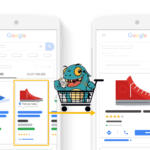
3 Step Guide to Improve your Product Feed
We all know that Google Shopping is here to stay. It’s become a must-have for eCommerce stores worldwide – for a good reason. Google Shopping lets you list your product for free to a global audience of shoppers.
As Black Friday and the holiday season approaches, you need to ensure that you optimize your product feed and get the most out of your product listings.
Using a data feed is instrumental to a great Google Shopping strategy. If your data is flawed, it could end up costing you in lost revenue.
This article will provide three useful ways to improve your product feed for the holidays.
Step 1: Reorganize your product feed information
Have you taken a look at your products and their variants? Next, have you cleaned them up or ‘normalized’ them? What we mean by ‘normalizing’ is aligning your product titles and descriptions with real queries that customers perform when searching for products.
You may have listed your t-shirts as ‘tangerine’ or ‘magenta’ in color – but customers are searching for orange or pink t-shirts instead. You could be missing out on sales by unusually describing your products.
Similarly, remove any unnecessary information from the product title. For example, your GTIN or SKU is vital for your feed – but it shouldn’t be in your product title.
If you are adding too much unnecessary information from your product titles, you are damaging your keyword density, and your product may seem irrelevant to your potential customers.
You can rest assured because there are columns or fields in your feed where you can enter extra information – so don’t feel tempted to add everything to your product titles.
Our tip: Include the product category in your product titles. It is key to teaching Google Shopping what types of queries your products are relevant for and ensures that your products show up to customers at the right times.

Step 2: Check your images
Are you using high-quality images for your product listings? Be honest.
Using top-quality images can make a better impression on your customers and improve your product listings’ performance.
Don’t fall victim to using logos, overlays, or promotional messages for your product images. It can seem unprofessional and can leave a poor impression on your audience.
Our tip: Ensure that you are using the cleanest, highest-quality images wherever possible. Using better images could mean that your listings are more likely to be shown for relevant queries and will be better remembered by your potential customers.

Step 3: Match your product feed data to your website
You will need to match Google’s landing page requirements to avoid disapprovals.
To stay on track, use the same product title and description on your landing page as you do in your product feed. Avoid using synonyms or different terms that are not involved in your product landing page.
This description can also help customers avoid confusion or a poor shopping experience if your messaging doesn’t match.
Our tip: Your landing pages need to show the same product variant that you use in your listings. Ensure your customers don’t need to select specific variants once they visit your website, as this can be an annoying experience for customers.

Summary
Using these tips can help your product feed perform better on Google Shopping. You’ll want to pay attention to your feed as your changes can help your feed achieve well this holiday season.
Contact ShoppingFeeder for more information about listing with Google Shopping!




